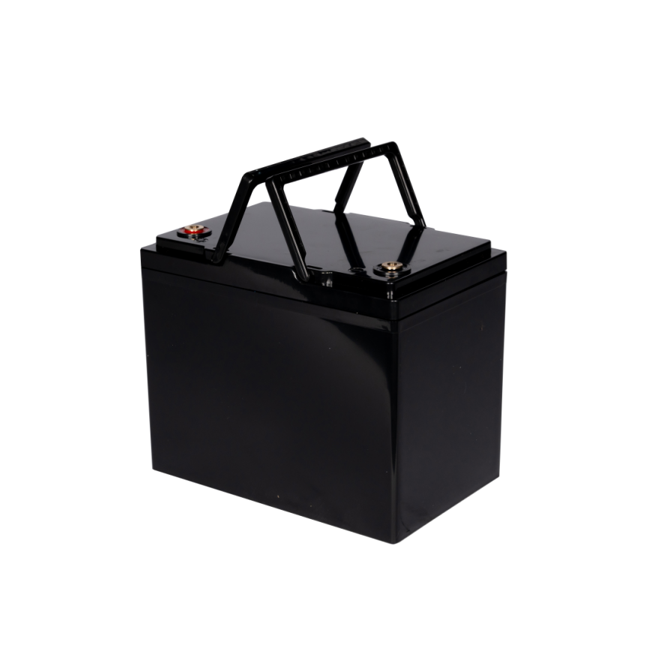Choosing the right battery type for your solar storage system is crucial for long-term energy independence. The most popular options include lithium-ion, lead-acid, and newer alternatives like sodium-ion batteries. Understanding their pros and cons will help you make the best decision for your needs.
Choosing the right battery type for solar storage impacts efficiency, lifespan, and cost. Here's a breakdown of the main options.
The market for solar storage batteries continues to grow, with each battery type offering distinct benefits. Depending on your needs, one may suit your home or business better than another. Let's dive deeper into the types of batteries commonly used in solar storage systems.
Lithium-Ion Battery
Lithium-ion batteries1 are one of the most widely used types of solar storage batteries today. They are known for their high energy density, longer lifespan, and high efficiency, making them ideal for solar energy storage. One popular type of lithium-ion battery is the LiFePO42 (Lithium Iron Phosphate) battery, which stands out due to its safety features and long cycle life.
Lithium-ion batteries are the most common for solar storage due to their efficiency and longevity. LiFePO4 is a safer, longer-lasting option.
Dive-Deeper: Performance and Benefits
Lithium-ion batteries, including LiFePO4, provide excellent cycle life, usually between 3,000 to 5,000 cycles depending on the specific technology. In contrast, traditional lead-acid batteries may only last around 500 to 1,000 cycles. Additionally, lithium-ion batteries are lighter and have a smaller footprint, making them more space-efficient for residential systems.
For example, a typical LiFePO4 battery offers up to 6,000 cycles, making it a great long-term investment, especially for those looking to minimize replacement costs. Lithium-ion batteries also charge faster, which is a crucial factor for solar storage.
| Feature | Lithium-Ion | Lead-Acid | Flow Battery | LiFePO4 |
|---|---|---|---|---|
| Lifespan (cycles) | 2,000-5,000 | 500-1,000 | 10,000+ | 3,000-6,000 |
| Efficiency | High | Moderate | High | High |
| Weight | Light | Heavy | Heavy | Light |
| Safety Features | Moderate | Low | High | Very High |
| Cost | High | Low | Moderate | High |
Why Choose LiFePO4 Over Standard Lithium-Ion Batteries?
LiFePO4 batteries have a higher safety profile than other lithium-ion types, making them more suitable for residential use. With a more stable chemical composition, they are less prone to overheating and thermal runaway, which is a common risk with other lithium-ion chemistries.
LiFePO4 batteries also have a longer lifespan than conventional lithium-ion batteries, which means fewer replacements and greater long-term savings. For example, the Deye hybrid inverter system is optimized for use with LiFePO4 batteries, offering excellent performance and efficiency when combined.
Lead-Acid Battery
Lead-acid batteries3 have been used for decades in solar energy storage systems. They are generally cheaper than lithium-ion options but come with trade-offs in terms of lifespan and efficiency.
Lead-acid batteries are cost-effective but offer a shorter lifespan and lower efficiency compared to newer technologies.
Dive-Deeper: Advantages and Limitations
Lead-acid batteries are still popular due to their low initial cost, which makes them an attractive option for budget-conscious solar users. However, they require regular maintenance, such as checking water levels, and are significantly less efficient than lithium-ion options. A typical lead-acid battery only lasts between 500 and 1,000 charge cycles, which is considerably shorter than the 2,000+ cycles you can get from lithium-ion batteries.
Moreover, lead-acid batteries have a lower depth of discharge (DoD) compared to lithium-ion batteries, which means they can't be discharged as deeply without causing damage. This results in less usable energy from the battery and more frequent charging, leading to a lower overall efficiency.
Flow Battery
Flow batteries4 are an emerging technology in the solar storage space. Unlike traditional batteries, flow batteries store energy in liquid electrolytes and can last much longer—up to 10,000 cycles or more. These batteries are ideal for large-scale solar installations and commercial applications.
Flow batteries are excellent for large-scale storage due to their long lifespan and scalability.
Dive-Deeper: How Flow Batteries Work
Flow batteries are made up of two tanks that hold liquid electrolytes, which are pumped through a cell stack to store and release energy. This design allows flow batteries to store large amounts of energy for long periods and discharge them efficiently. They are also modular, so the energy storage capacity can be easily expanded as your needs grow.
While flow batteries are still in the development stage for residential use, they show great promise for utility-scale solar installations. For example, they are used in some large solar farms, providing backup power and energy storage for grid use.
Nickel-Cadmium Battery
Nickel-cadmium batteries5 are less common for solar applications but are sometimes used in specific environments due to their ability to operate in extreme temperatures.
Nickel-cadmium batteries are durable but less efficient than lithium-ion and more expensive than lead-acid batteries.
Dive-Deeper: Durability and Cost
NiCd batteries are extremely durable and can function well in harsh conditions, including very hot or cold climates. However, their efficiency is lower compared to other types of batteries, and they also suffer from a "memory effect," which reduces their effective capacity over time.
Due to their cost and performance limitations, NiCd batteries are typically reserved for specialized applications, such as off-grid solar systems in remote areas or backup power in regions with extreme climates.
Sodium-Ion Battery
[Sodium-ion batteries](What are sodium-ion batteries and how do they compare to lithium-ion batteries for solar storage?)6 are still in the research and development phase but offer significant potential for solar storage. They are seen as a cheaper and more environmentally friendly alternative to lithium-ion batteries, using abundant materials like sodium instead of lithium.
Sodium-ion batteries are an emerging technology with the potential to reduce costs and environmental impact.
Dive-Deeper: Future Potential
Sodium-ion batteries could revolutionize solar energy storage in the coming years. While they are not yet widely available, their low cost and abundance of materials make them a promising option for solar users looking for environmentally friendly alternatives to lithium-ion and lead-acid batteries.
Saltwater Battery
Saltwater batteries7 are another eco-friendly option for solar energy storage. These batteries use salt and water as the electrolyte, making them non-toxic and highly safe. They also have a relatively long lifespan, although they are less efficient than lithium-ion and lead-acid batteries.
Saltwater batteries are safe, eco-friendly, but less efficient compared to other options.
Dive-Deeper: Safety and Applications
Saltwater batteries are an excellent option for environmentally conscious consumers who prioritize safety. They are non-flammable and do not contain toxic materials, making them safer to handle and dispose of than other battery types. However, their energy density is lower, meaning they require larger storage units to provide the same amount of power as a lithium-ion battery.
Conclusion
Choosing the right battery for your solar storage system is essential for maximizing performance, lifespan, and safety. Lithium-ion batteries, particularly LiFePO4, offer the best balance of efficiency, lifespan, and safety for most residential and commercial solar applications.
Footnote
-
This link explains the benefits of lithium-ion batteries, including their high energy density, long lifespan, and efficiency in solar energy storage. ↩
-
This link provides information on LiFePO4 batteries, highlighting their safety features and long cycle life compared to other lithium-ion batteries. ↩
-
This link explains the benefits and drawbacks of lead-acid batteries, including their low initial cost, shorter lifespan, and lower efficiency compared to lithium-ion options. ↩
-
This link explains how flow batteries function, their long lifespan, scalability, and why they are ideal for large-scale solar installations. ↩
-
This link explains the durability of nickel-cadmium batteries, their ability to function in extreme temperatures, as well as their lower efficiency and higher cost compared to other battery types. ↩
-
This link explains the potential of sodium-ion batteries, how they compare to lithium-ion batteries, and their promise in reducing costs and environmental impact in solar storage. ↩
-
This link explains the safety, eco-friendliness, and lower efficiency of saltwater batteries, and how they compare to lithium-ion batteries in solar storage applications. ↩










